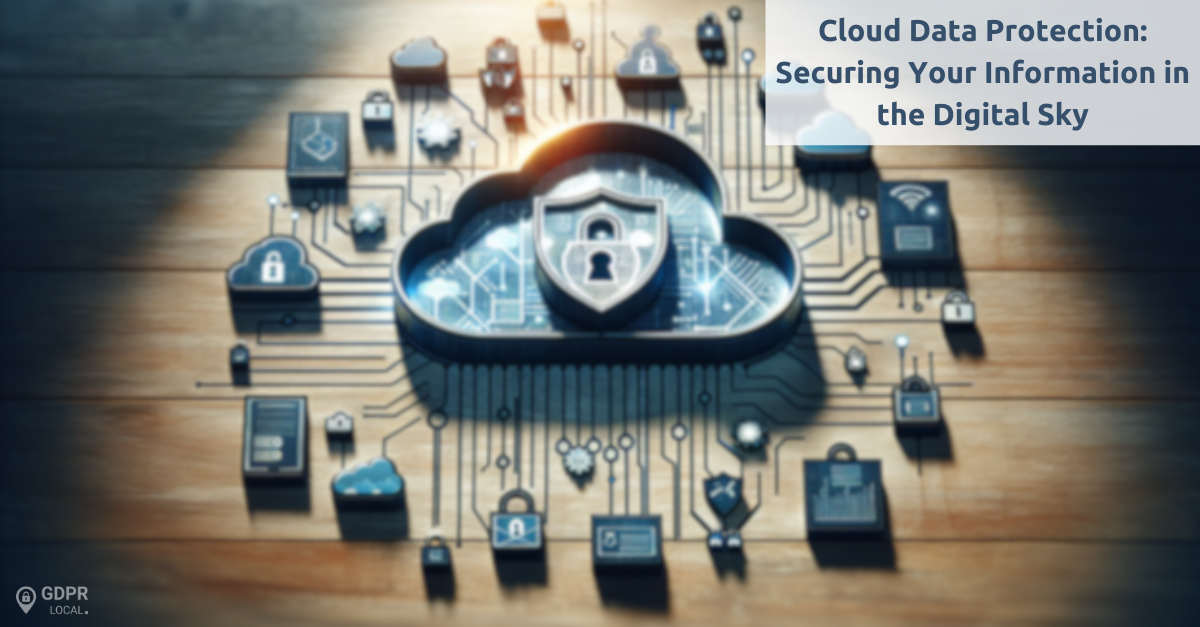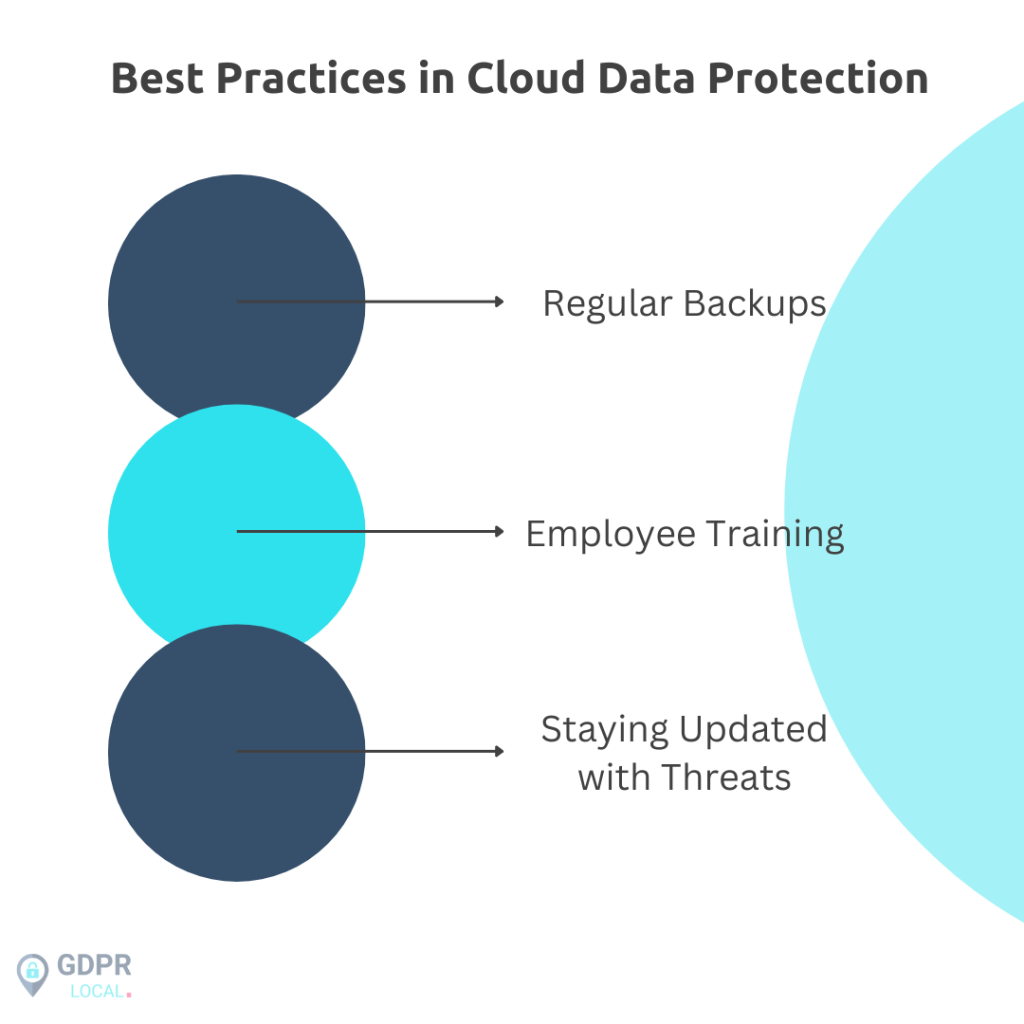
Cloud Data Protection: Securing Your Information in the Digital Sky
We live in a time where data floats like clouds in the sky, cloud data protection has emerged as an imperative shield against the tempest of cybersecurity threats. As companies and individuals increasingly store sensitive information in cloud environments, the complexity of keeping this data from breaches, loss, and unauthorized access grows. Cloud data protection not only secures data residing within these digital clouds but also ensures compliance with stringent regulatory requirements, positioning it as a cornerstone of modern data security strategies. Tackling the intricacies of data protection in cloud computing is no longer an option but a necessity, underlining the importance and urgency of adopting good data protection measures.
What is Cloud Data Protection?
Key Concepts of Cloud Data Protection
Cloud data protection involves a thorough approach to securing data stored in cloud environments from various threats such as breaches, unauthorized access, and loss. One of the foundational elements of this protection is the implementation of robust encryption methods, which safeguard data both at rest and in transit. Additionally, adopting privacy-by-design principles ensures that data privacy measures are integrated into the development of business processes and technologies.
Organizations must also establish stringent access controls to restrict data accessibility to only those who require it for their roles. This includes evaluating the security measures that are in place and making necessary adjustments to align with the evolving security landscape of cloud computing. Furthermore, compliance with data protection regulations like GDPR and HIPAA is essential for maintaining customer trust and avoiding legal repercussions.
Why Cloud Data Protection is Crucial
The significance of cloud data protection cannot be overstated, especially where data breaches and cybersecurity threats are increasingly common. Protecting sensitive information in the cloud is vital for maintaining customer trust and ensuring the integrity and availability of data.
Cloud service providers and their clients share the responsibility for implementing effective security measures, following the shared responsibility model. This collaborative approach helps cover all aspects of cloud security, minimizing potential vulnerabilities. Additionally, with the rising costs associated with cybercrime, estimated to reach $10.5 trillion annually by 2025, investing in advanced cloud data protection strategies is more crucial than ever.
Organizations must be proactive in their approach to cloud data security by continuously assessing their risk tolerance and implementing comprehensive data protection strategies. This includes creating backups, using encryption, and isolating critical data from production environments to safeguard against cyberattacks, natural disasters, and human error.
Types of Cloud Data Protection Solutions
Encryption
Encryption serves as a fundamental method of cloud data protection, transforming plaintext data into ciphertext, making it indecipherable without the appropriate keys. Cloud encryption relies on robust key management practices to ensure data security. Symmetric encryption, where the same key encrypts and decrypts data, offers speed, whereas asymmetric encryption provides higher security through a public key for encryption and a private key for decryption. Google, for instance, employs AES-256 for encrypting data at rest, ensuring that even if attackers access physical storage, they cannot decrypt the data without the keys.
Access Controls
Access control is a critical component of cloud data protection, determining who can access specific digital resources. It relies on authentication to verify user identities and authorization to grant or deny access based on predefined policies. CloudCodes Access Control, for example, allows organizations to gain granular control over data and user behavior, preventing intentional or unintentional data breaches. Policies can restrict access based on IP addresses, devices, browsers, or time, ensuring that data is accessed only under secure and authorized conditions.
Regular Audits and Monitoring
Regular audits and continuous monitoring are essential for maintaining a secure cloud environment. They help organizations identify vulnerabilities, ensure compliance with regulations like HIPAA and PCI-DSS, and respond to incidents efficiently. Cloud security monitoring assesses the IT infrastructure for threats, leveraging log data similar to SIEM tools to alert administrators about breaches. Integrating automated security workflows enhances the response to security incidents, minimizing human error and reducing the damage extent.
Implementing Cloud Data Protection
Assessing Your Needs
Organizations must first evaluate their risk tolerance levels and understand the specific types of data they need to protect. This includes structured, unstructured, and semi-structured data, ranging from accounting transactions and sales records to client information and employee databases. Identifying the criticality and sensitivity of this data is paramount, as loss or unauthorized access can lead to significant financial and reputational damage.
It is essential for companies to assess the integrity and availability of their data to ensure business continuity. This assessment should consider potential threats such as cyberattacks, natural disasters, and human errors, which can all lead to data corruption and processing interruptions. By understanding these risks, organizations can tailor their cloud data protection strategies to be both effective and compliant with regulations like the General Data Protection Regulation (GDPR).
Choosing the Right Solutions
Selecting the appropriate cloud data protection solutions involves several key considerations to address the myriad of risks associated with storing and utilizing data in the cloud. One of the primary methods is implementing encryption across all data, ensuring that even if attackers gain access, the data remains unreadable. Organizations should look for solutions that offer strong encryption, like AES-256, which is recognized as the gold standard due to its high level of security.
Access control is another critical component. Companies need to establish strict access controls and authentication measures to restrict data access to authorized personnel only. This minimizes the risk of data breaches and unauthorized access. Regular audits and continuous monitoring are also vital to maintain a secure cloud environment, ensuring all security measures are effective and that compliance with regulatory requirements is met.
For businesses migrating to the cloud, choosing the right cloud service provider is crucial. Providers should be vetted based on their adherence to security standards and frameworks, service level agreements, and their ability to meet specific business needs such as scalability, disaster recovery, and data sovereignty. It is also advisable to ensure that the provider offers comprehensive support for migration and ongoing management to avoid common pitfalls associated with cloud transitions.
By carefully assessing their needs and selecting the right solutions, organizations can effectively implement cloud data protection strategies that safeguard their data against the evolving landscape of cyber threats, ensuring their digital assets are secure and their operations remain uninterrupted.
Best Practices in Cloud Data Protection

Regular Backups
Regular backups are a cornerstone of robust cloud data protection. Organizations should define policy template schedules to meet data capture window requirements, ensuring that backups are performed during specified times to maximize flexibility and resource allocation. It’s advisable to retain several days of snapshot data while also scheduling more frequent backups for critical data. Configuring a snapshot policy schedule that runs continuously on a daily basis can significantly enhance the recovery point objectives (RPOs) and ensure data resilience.
Employee Training
Employee training in cloud security is crucial to minimizing the risk of security breaches caused by human error. Organizations should invest in comprehensive cloud security training and awareness programs. These programs should educate employees on the risks associated with cloud computing and the best practices for preventing security breaches. Regular simulations and training sessions can help employees quickly identify and respond to security incidents, thereby minimizing potential damage and ensuring business continuity.
Capital One, following a significant breach, developed an internal training program focused on AWS security best practices. This program includes crucial topics such as password management, network configuration, and incident response, reinforcing employees’ understanding of cloud security risks and mitigation strategies.
Staying Updated with Threats
Staying informed about the latest security threats and trends is essential for maintaining effective cloud data protection. Organizations should foster a culture of security awareness by conducting regular training sessions that include phishing simulations and sharing best practices for data privacy. Regularly monitoring the cloud environment for suspicious activity and auditing access logs are critical practices that help in early identification of potential security breaches. Automated alerts for suspicious activities can provide real-time threat detection, allowing organizations to respond swiftly and effectively to mitigate risks.
Conclusion
Effective cloud data protection is crucial for ensuring data integrity, confidentiality, and availability. Regular backups, employee training, and staying updated on threats are essential to strengthening cloud security. As cybersecurity risks evolve, so too must our protective measures, demanding ongoing diligence, awareness, and a commitment to cutting-edge security practices.
FAQs
How does cloud technology safeguard data?
Cloud data security is designed to protect data whether it is stored or being transferred in and out of the cloud. It guards against security threats, unauthorized access, theft, and corruption through a combination of physical security measures, technological tools, access management, controls, and organizational policies.
What encryption methods should be used by cloud providers to secure data during transmission?
Cloud providers commonly use the Advanced Encryption Standard (AES) to encrypt data at rest. To protect data in transit—meaning while it is being transferred between your local site and the cloud provider, or between two cloud services—encryption ensures that your data remains secure even if the communications are intercepted.
Is data stored in the cloud considered secure?
Yes, data stored in the cloud is generally secure. Cloud storage systems keep your data off-site in an encrypted format, which protects against various security risks. Additionally, cloud storage allows you to access your data from any device with an internet connection, enhancing both security and accessibility.
What aspects of my digital assets does cloud security cover?
Cloud security encompasses the protection of your data, applications, virtual network controls, operating system, and user access. The cloud provider is responsible for securing the computing resources, storage, and physical network infrastructure, including all necessary patching and configuration management. You are responsible for securing your data, managing user access, and safeguarding your applications.